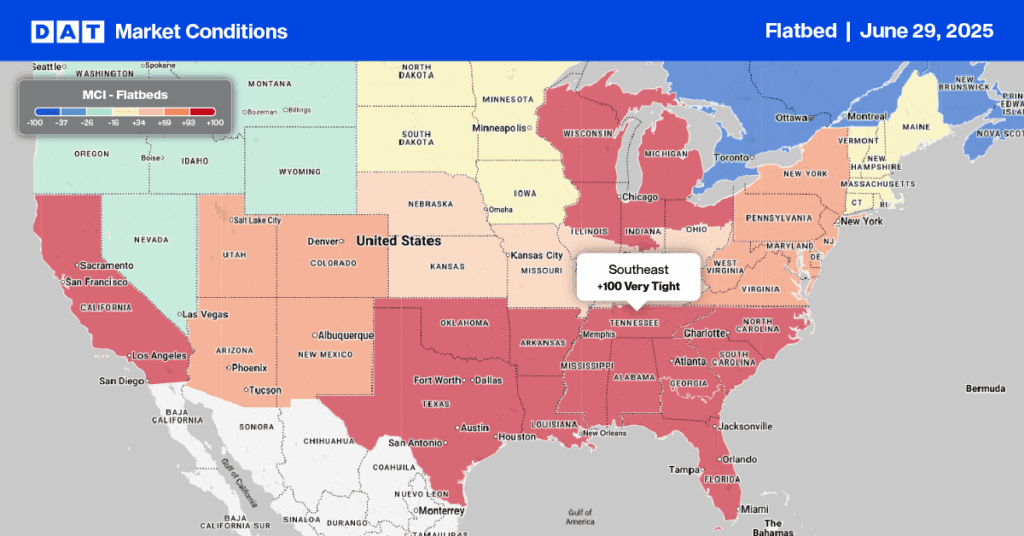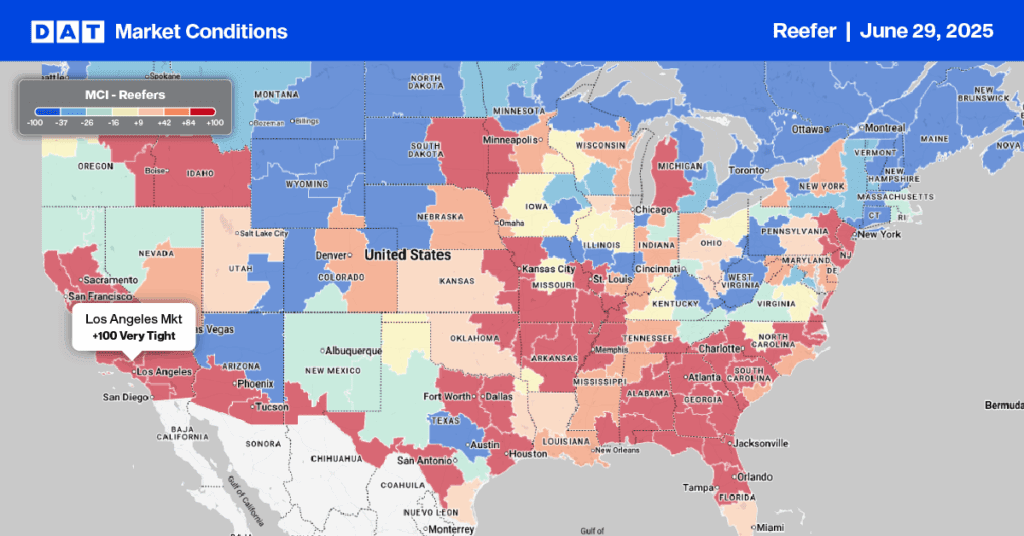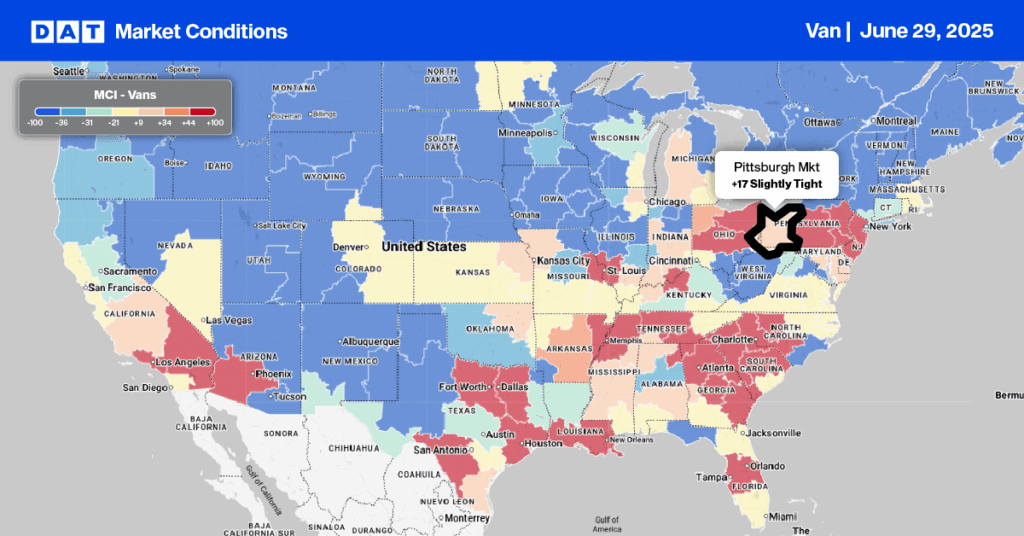Unprecedented levels of container imports continue to flood port markets. The West Coast ports in particular saw increased traffic where 89% of TEU (twenty-foot equivalent unit) volume arrived from Asia in March. China alone accounted for 56%.
Ongoing U.S. consumer demand for physical goods shows no sign of decreasing. Retailers continue to restock depleted inventories, and the economy is poised to take off this summer. The U.S. Census Bureau reports consumers spent $55b more in retail and food services in March, a 9.8% increase from February.
Get the clearest, most accurate view of the truckload marketplace with data from DAT iQ.
Tune into DAT iQ Live, live on YouTube or LinkedIn, 10am ET every Tuesday.
The ports of Los Angeles and Long Beach continue to see a queue of vessels waiting an average of eight days at anchor to unload consumer goods. This backlog has forced some ocean carriers to divert their vessels to other less busy ports.
However, offloading at smaller ports has increased congestion and pushed more freight into the spot market, with shippers attempting to move surging volumes. This will be a challenge as these port markets don’t normally see such high volumes.
A deeper port in Charleston S.C. means higher truckload volumes
One such port is Charleston, SC. However, its current expansion program will deepen the port to 52 feet and open a new 1,400-foot berth at the Leatherman Terminal. This will allow much larger container vessels — up to the 20,000 TEU — to add Charleston as an import destination.
The Port of Charleston also opened a new container terminal on March 30 — marked by the arrival of Hapag Lloyd’s 3,237 TEU Yorktown Express — and increasing terminal capacity by 30%.
The Charleston market has a relatively small freight market. It ranks 70 out of 135 in terms of spot market truckload posts on the DAT One load board network. However, brokers and carriers should begin to see higher volumes of truckload freight as the year progresses.
Adding 700,000 TEU of capacity to the U.S. port system is much needed, especially with the number of large vessels used. According to the PIERS database from IHS Markit, loaded TEU volumes in Charleston were up 54% from last March.
Vessels were coming from:
- China: 27% of total volume
- Germany: 16% of total volume
- South Korea: 9% of total volume
Just over half of all inbound load container volume arrived from Asia, which makes the trend towards larger container vessels one to watch.
The recent crisis of the 20,000-TEU Ever Given emphasizes the sheer size of modern day vessels and the importance of the Suez Canal. Not only is it vital to Europe, but it’s also a key waterway to the U.S. East Coast from Asia.
Ultra-large vessels from Asia must travel west through the Suez Canal for East Coast port calls, since the Panama Canal’s maxes out at 14,000 TEU vessels.
John McCown from Blue Alpha Capital notes that there will be a coastal shift from west to east, favoring ports with deep channels. That will make the Suez Canal — where the largest container vessels can transit — the most direct route to the East Coast.
Charleston has nearly 80 million people living within 500 miles, or a one-day truck drive. For brokers, carriers and shippers, this makes this currently small freight market one to watch.


